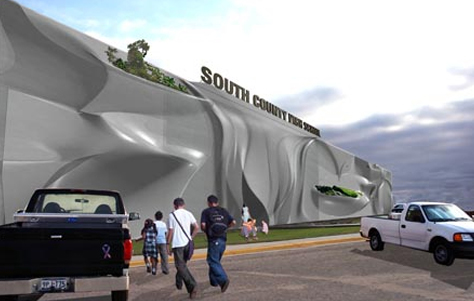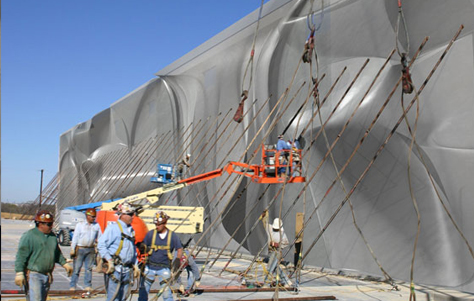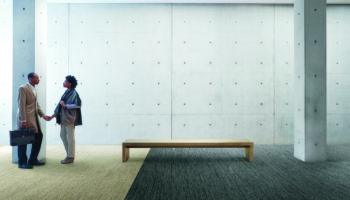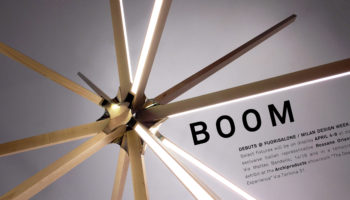Here Comes Hydrowall!
As building communities worldwide increasingly see the wisdom and necessity of going green, they’ve also come to appreciate the legacy of “critical regionalism,” a philosophy that, in a nutshell, says 1. use local materials, 2. build to local climates, and 3. integrate nature’s “freebies” into the architectural components. A couple of examples of such might include adobe construction in the desert Southwest and load-bearing strawbale on the Nebraska plains–both sustainable materials procured locally and well-suited to regional heating/cooling needs. With her prototype project for “Hydrowall,” architect Virginia San Fratello of Clemson University updates the paradigm.
Hydrowall. Designed by Rael San Fratello Architects.
The concept is simple enough: create a building skin that doubles as a water catchment system. The water, stored in an interior bladder, then acts as an insulator and thermal mass–preventing heat transmission to the interior during the day while storing the same, which can then be used for heating at night by means of an air exchanger. Hydrowall also has potential applications for recycled water and “gray water.” The retained water could be used for irrigation for plants or for plumbing.


The prototype, a 42 inch high model which is one third the height of an eventual building wall, was created out of fiberglass from a foam mold created by a Genovese shipbuilder. Why a shipbuilder? “Because the process of shipbuilding demands technology that allows for the exploration of curvilinear surfaces,” says San Fratello. Another way of saying this is that the wall must mimic the way water behaves; the curvilinearity works to capture water descending vertically. Architects are intrigued not only by the concept’s contributions to
sustainability, but also because its formal constraints encourage aesthetic innovation. “The thing that made it interesting was that it generated the design with an eye to both sustainability and experimental form-making,” says Jeffrey Inaba, a member of the Next Generation competition jury, which awarded San Fratello first prize. “Even so,” says Inaba, “it seems like she could push the logic of form-making in a more bizarre, aesthetically
arresting way. Right now there’s this transparency of what the thing is supposedly doing and its form. The design could be really enriched by there not being such a close correspondence between the wall and the bladder.”
Admittedly, the digitally generated prototypes do have an aesthetically questionable Dali-esque quality (think melting clocks). They remind me a bit of the structures populating the pseudo-future landscapes of such high brow fare as Logan’s Run or Bucakroo Banzai. But that doesn’t preclude the potential for improvement. San Fratello’s work with digital modeling, in which the wall’s contours are fine-tuned before the mold is created, may go far towards the negotiating the gap between visual appeal and functionality. As with many emerging technologies that put a premium on sustainibility, the finished look evolves with time and use. In this regard, Hydrowall intrigues. My hunch is that it will morph into a form that complements its function.
See Rael San Fratello Architects for further info.




Leave a Reply